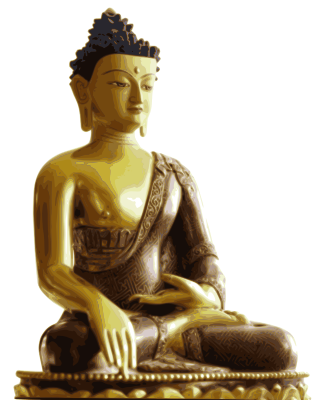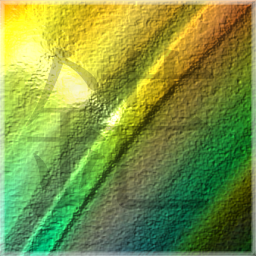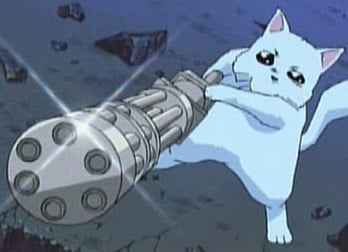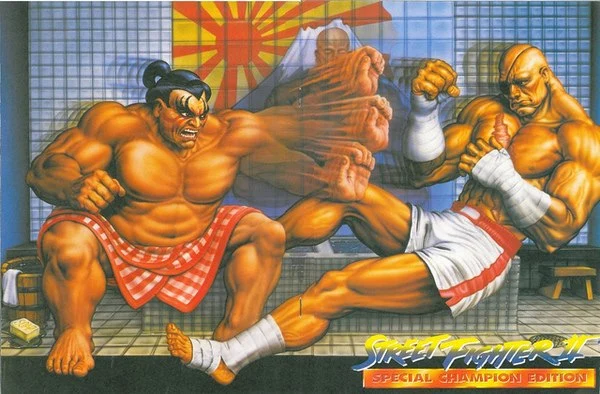Hindi or any Indic languages (popular ones) have any case differentiation.
Mostly because emphasis on any word is not literal it is tonal.
So there are these things called - matra (12 matras in hindi)
They are symbols representing inflection/emphasis etc. and we can combine them with each character of the alphabet and convey tone.
I think shoebum was saying that “Hindi, or any Indic languages ( Devanagari-based ones ) do not have any case differentiation.”
I tried learning Sanskrit ( because it seems to be THE language that scripture ought be in ) … and … ugh.
Devanagari is a syllabari, not an alphabet ( each character is a syllable ), and they hide letters among other letters, in a way that only a child could learn.
My old brain’s too wooden to learn that stuff at anything-like a useful speed.
Nobody’s mentioned, though, that the absence of upper/lower case variants breaks CamelCase programming for those languages.
This means that people whose primary language doesn’t have upper/lower case characters, they probably have a harder time understanding program-code that is written that way.
There’s a programming-language Citrine which is intentionally designed so that everybody can program in their own language, with it, so apparently it’s the same programming-language, but in zillions of different scripts & languages…
https://en.wikipedia.org/wiki/Citrine_(programming_language)
I’ve no idea if there are matras in Sanskrit: I never got that far ( learning the basic characters, & their pronunciation, defeated me, the 2-3 times I tried learning it ), but that seems brilliant…
There’s a yt channel on it which has some good help: Sanskrit is engineered to make each sound distinct from the others, in a scientific/systematic way, & so it uses one’s mouth/formants scientifically… they show … it’s something like 5 sounds times 5 variations, or something ( been a couple years since I tried last )…
but the basic-question: is there some visual emphasis which is global, instead-of only in specific scripts…
honestly, I can’t think of any…
I’ve read ( in Gleick’s “The Information” ) that African languages are usually tonal, & Chinese is tonal ( so “ma” and “ma” in different notes means 2 different things ) … hey!
I just remembered: many languages are illiterate languages, to begin with.
that … partially breaks the question, because many languages have a foreign symbol-system just stuck onto them, then…
Like all the American Indian languages that hadn’t evolved their own symbols, when we stuck symbols on their languages, that … broke the natural-language-evolution process?
Or is it that it is natural for only a percentage of a world’s languages to have any writing?
hmm…
foreign/imposed writing-systems would, though, be significantly less likely to have an appropriate system-of-emphasis, is this point…
_ /\ _
A lot of excellent observations.
But you did answer your question when you mentioned most older scripts were illiterate (in the academic sense).
Illiterate scripts inherently carry a lot of information whose priority is to convey the message independent of the listener (I’m guessing)
I think languages that can convey tone are awesome. It makes the language richer and less ambiguous
My point is that when we imposed scripts on languages-which-are-tonal, & our script doesn’t indicate tone, then we sabotaged all communications done in the resulting language-script pairing.
That that mismatch damages all communication which goes through that specific mis-engineered “channel”.
& that each language is going to have its own pattern of what’s-important/what-isn’t-important, & that having a script which mismatches THAT language’s paradigm is going to damage communications in it, automatically …
& that all imposed-script-on-language situations are significantly more likely to mismatch, than are self-evolved scripts.
( that being said, the Semitic languages, both Hebrew & Arabic, have the nasty habit of leaving out the vowels from script, because “of course everybody already knows which vowels we mean: we do, so therefor everybody does!”
which trashes our ability to be certain about ancient texts…
I’ve read that for ages the Masoretic version of the “book of Job” had the guy end-up with thousands of gold pieces, because in Hebrew the non-vowels for “sheep” and “gold-pieces” are identical…
so their script didn’t value identifying that, because in the writer’s minds “everybody already knows”…
but in the Aramaic text, the words are not identical-in-nonvowels, so therefore it was shown, through the Dead Sea Scrolls, that the whole Masoretic “gold-pieces” claim, in that book was different from the original text/meaning/rendition.
So, scripts that include what the language’s people find to be important … can sometimes leave-out critical information!
But, if what was important to the original-language people was excluding outsiders … then, of course that’d be effective-means!
& group-identity is one of the functions of languages, so … that has to be kept in mind, too…
sigh )
Thai does not have upper case letters.
It does have a character that essentially means duplicate the previous word which is a common way to pluralize or emphasize:
Child = เด็ก “dèk”
Children = เด็กเด็ก or เด็กๆ “dèkdèk”Pretty = งาม “ngaam”
Pretty! = งามงาม or งามๆ “ngaamngaam”While I don’t speak Chinese, I saw some comment mentioning that the protagonist of the apothecary diaries Maomao’s name means literally “cat cat”. She is latter called Xiaomao meaning something like little cat. I wonder if the first one had some similar roots to the way it is used in Thai meaning big cat 😺
interesting! I love learning about the different kinds of logic languages use. visually, Thai is one of my favorite languages (and Thailand has my favorite cuisine, too)!
There’s no capitalization in written Chinese.
But there is a “upper case” for writing numbers. Its set of very complex characters meant for writing contracts so you can’t easily tamper with it.
Like “一” (one) could be easily changed to a “十” (ten) with just one stroke, but “壹” also means “one”, but you can’t add strokes to change it, any attempt at tampering with contracts/documents would be easily noticed. Usually this is never used in every-day life.
(Wikipedia https://en.wikipedia.org/wiki/Chinese_numerals#Ordinary_numerals)
It’s not really “capitalization” but more like writing “One Thousand Dollars” instead of “$1000”
Idk what you mean by “emphasis”, but there is no difference between proper nouns and common nouns. I mean, there is italics and bold if written digitally. Or underlining it if written on paper.
(I’m Chinese-American btw)
Idk what you mean by “emphasis”, but there is no difference between proper nouns and common nouns. I mean, there is italics and bold if written digitally. Or underlining it if written on paper.
I THINK THEY’RE ASKING HOW YOU WOULD WRITE SO AS TO GIVE THE IMPRESSION THAT THE SPEAKER IS YELLING
對唔住,漢字冇大寫子,用 BOLD 就得啦
(Sorry, Chinese Characters do not have capitalized characters, just use bold)
明唔明?
(Get it?)
If the site doesn’t show bold, then:
注意!
***重要消息係呢度!!!***
明唔明?Attention!
*** Important Message Here!!! ***
Get it?This works too.
(Note: I do not browse Chinese internet often, but this is what I would personally use to highlight it)
Korean does not. BUT, we, sometimes and almost exclusively online, use whitespace(plus exclamation mark) between each characters to emphasize.
망했다 -> 망 했 다!
Gotta get some use out of that giant spacebar that’s sitting at the bottom of your keyboard!
Japanese has no uppercase/lowercase. Italics (oblique type) is generally unused as a standard. Bolding can be used but uncommon in most writing. Underlining is commonly used for emphasis. Quotation marks are sometimes used to emphasize in the way “air quotes” would be. It’s rather antiquated but dots or Japanese commas above or beside (in vertical writing) can be used where italics might be used in English.
Sans-serif and serif have their equivalents in CJK langauges - in Japanese they are called Gothic and Mincho type respectively. With Gothic every line maintains the same width. Mincho uses the traditional standard where line widths vary according to each stroke, the rules are derived from how it was written by brush. Calligraphic writing takes this to an extreme and is more of an art-form on special paper, depending on your intent you can follow the traditional rules or be a bit more creative.
As far as I know, while Japanese has no upper and lower case letters, the three/four alphabets Kanji, Hiragana, Katagana, and Romanji get mixed in a way one could see as similar. Denoting different kinds of words or grammatical aspects of a sentence.
Japanese has three alphabets (and the English alphabet… and those Arabic numbers we are all familiar with)
- Hiragana (ひらがな) for native words, grammar, and morphology - it reminds me of cursive
- Katakana (カタカナ) it gives an unmistakable clue you are reading a foreign word - but can also be used for emphasis
- Kanji (漢字) borrows Chinese characters that can be read with native or borrowed sounds, but generally with the same meaning
Given those and the English letters at your fingertips they have a lot of tools to give context. Grab a newspaper or Manga sometime, even if you don’t know the words you can tell each writing system apart pretty easily.
Huh,
I lived there for three years and only learned about, Kanji, Katakana and Romanji.
Is Hiragana a more classic version of the language or is it an evolution of Katakana, that it looks similar to?
Hiragana is the standard Japanese alphabet basically… But in everyday language, Hiragana is used to construct Kanji, so you would rarely encounter actual written Hiragana unless 1) in some commonly used terms and/or grammatical constructs, 2) someone is pointing out the pronunciation of a Kanji, or 3) in materials for younger audiences
Katagana is used for “borrowed words” from non-Asian languages like say ice cream. These words never have associated Kanjis to begin with, so that’s why you see them more often
Edit: I correct myself, I was a bit too exaggerating… Hiragana isn’t that rare, just less prominent than Katagana. But it is a bit strange if someone lives in Japan in a long time and never know they exist… They are the basic alphabet after all
I wouldn’t say you rarely encounter written hiragana. It’s in practically every sentence because, as you mentioned, it carries the grammar of a sentence. Particles, conjugations, auxiliary verbs are all written with hiragana.
As one of my Chinese friends in grad school put it: he could kind of understand written Japanese but had no idea what was going on with “those weird characters everywhere.”
As one of my Chinese friends in grad school put it: he could kind of understand written Japanese but had no idea what was going on with “those weird characters everywhere.”
Lol true. I read the 死 character in a bunch of weird symbols and suddenly the entire message looks so omnious as if its a threat.
Surprisingly, I looked up "Japan"s wikipedia in Japanese, and some parts are quite readable to me like this:

They all look familar, as in, it doesn’t look foreign to me, because they are almost all just Chinese, except the weird “@” looking symbol. But unfortunate I never made it past 2nd grade before emigrating so I don’t know how to pronounce the names lol. I know the positions like 天皇, but idk how to pronounce the names of the actual people because they contain characters I never learned.
Then there’s some parts looking like this:

I have no idea what most of it is, looks very strange and “foreign” to me, except those few blocky characters that are chinese… I mean, I can make out what it roughtly says based on those few chinese characters: Japan Country … east… location … country … area … population… island nation … 4 island … 6th in the world … economy … [etc…]; like I can read a few characters every so often, everything else, those characters that are curvy and round looks “broken” to me. Like lol when I was a kid, I saw those “broken” characters amd I thought there was a glitch/bug in the electronic device (was messing around with settings and language menu).
This is exactly what my friend would say! Wikipedia is a genius example to use. That upper section is mostly nouns, not complete sentences, so it’s just kanji that are mostly readable to people to understand Traditional Chinese characters. The の character is a grammatical particle (written in hiragana) indicating that 最大 is modifying 都市, to give largest city.
And then all the “curvy” characters in the body of the text are the hiragana carrying the grammar of the sentence. You can understand the nouns and verbs since they’re written in kanji, but the grammar surrounding them is in hiragana. That’s why I thought it was odd for the other person to say you rarely encounter written hiragana. You really can’t write a complete sentence or much more than a single word without it.
“you would rarely encounter actual written Hiragana” is outright false. It is nearly impossible to write a full grammatically correct sentence in modern Japanese without the use of Hiragana, as Hiragana are used for subject and object markers, conjugation of verbs, question and assertion markers, possessives, adjectives, negation, and many many more grammatical constructs.
Source: read literally anything in Japanese, like an article from today’s news https://news.web.nhk/newsweb/na/na-k10014946221000
I did deploy a lot, but I recall one of my first cultural lessons and they only mentioned the three.🤷🏾
I really appreciate you taking the time to share some of your knowledge.
Thank you!
Hiragana isn’t very useful if you’re not studying the language. The only thing a tourist or the like would need it for is the names of some food on menus like soba or something like that. It’s much more important to know some basic kanji (like the difference between man and woman when you’re using the bathroom in a restaurant) and then katakana because that’s how they transliterate the foreign words.
However, if you do study Japanese you’d see hiragana on day one–it’s a crucial part of the language.
Do languages that use non-Latin alphabets (Asian, Cyrillic, Greek, Hebrew) have upper and lower case letters?
Greek has upper and lower case. From mathematics/physics you may have come across e.g. the ones for sigma (Σ, σ). Cyrillic also has them; most look the same between the upper & lower case variants, just bigger/smaller (Л, л), but there are some that differ (А, а).
I don’t think most Asian scripts have letter cases. Javanese script does have upper case but only for a small subset of letters and they are generally not used anymore.
What about serif or sans-serif?
Cyrillic and Greek, yes. There are also equivalents to the serif and sans-serif typefaces in Chinese, Japanese, and Korean typography.
How do they show emphasis?
On the Web, boldface (but not italics) is very commonly used across various writing systems. Obviously no all caps for those without capital letters.
None of Chinese Japanese, Korean, Arabic or Hebrew have an uppercase. I believe the Cyrillic alphabet does. That’s Russian Serbian etc.
Serif and sans serif is not about emphasis? Its pretty much just design and can be included in pretty much any script. The claim used to be that there was a difference in reading speed bw the two but thats not true. Thats not a linguistic feature but a design feature.
Now italics are tough in most non latin languages. In written form emphasis can be shown by font size, placement of words, color or even spacing.
I think I remember hearing about using a dot with some vertical Asian language to show emphasis too. (Was a Yt short so weak memory)
About the dot thing: Yep, at least in Japanese. It’s used in written entertainment media such as manga.
Russian Cyrillic here.
Yes, there are both upper- and lowercase letters. Most kinda look like the same letter.
Yes, there are serif and sans-serif fonts. I haven’t noticed any difference in use between the Russian and the English alphabets in that regard – serif is more prevalent in books and printed media, while sans-serif rules the digital (and maybe headings and headlines in printed).
As for the emphasis, the Russian alphabet and fonts (at least the popular ones) do support emphasis, like bold, italics, etc., but italics is used much less liberally. For example, I often see italics used in English to either make the reader emphasize a word or a phrase differently, or to make a name of a piece of fiction stand out (e.g. Dishonored vs Dishonored). I can’t recall a single time I’ve seen the former being used in Russian, neither in fiction, nor on the Internet – the only thing somewhat close to it would be in-universe letters or writings, but those are often put in their own paragraph with different margins and all.
The italics in the Russian digital fonts is not the same as the Russian or Cyrillic cursive, though. While the latter may be vastly different from the printed letters, varying by the age group (older generations have pretty different cursive from people my age, especially with some letters like the lowercase T), the former is basically the same style shift as in the Latin alphabets. For example:
- Regular: Съешь же ещё этих мягких французских булок, да выпей чаю.
- Italics: Съешь же ещё этих мягких французских булок, да выпей чаю.
As for the Russian cursive, I would say it’s actually closer to the printed Russian than the English cursive is to the printed English. There are some letters that often tend to blend together in cursive, such as the lowercase И, Л, Ш, Щ, but with proper spacing, they’re really easy to tell apart; especially given how they’re not that often that close to each other in most sentences.
The cursive English lowercase F, on the other hand, or uppercase S, or lowercase R, for example, left me guessing the first few times I saw them.
So, the Russian, or the Cyrillic alphabets are pretty boring in that regard when compared to the Latin-based alphabets of Europe. The region may be vast and varied, but its peoples are still pretty close and similar to each other.
I understand why you think cursive is closer to “regular” alphabet in Russian, but I can assure you that learning Russian cursive is basically a separate topic entirely and is really really hard. Big examples are д (looks like g), и, й and м are basically indentical, т looks like m.
I don’t know why you feel the need to assure a native Russian speaker of that, though.
It’s fairly easy to read (provided good handwriting) and to tell what’s what from the surrounding letters.
As for being a separate topic - that would be the case for other cursives as well. More so in German, where they actually have more than one cursive system (although I’m not sure if Kurrent is actually still around for me to be making that claim).
Russian is as unique as other European languages. No less, no more.
Because native russian speakers don’t have the perspective of learning it as a second language. Of course everything we learn as kids looks more obvious later on. I think the Russian cursive is at least one level above of complexity compared to at least neolatin languages (like Italian, French, etc.). I don’t know about German though.
Also, it might be a matter of familiarity in general. All Russian speakers I have known could always read Latin characters, so the alphabet is probably generally more familiar to most people compared to Greek or Cyrillic alphabet.
Privet moy drug! What’s it like being Russian, genuine question.
Mostly boredom and existential dread, why
Ah, so same as in the west!
I have a weird fascination with Russia and other Slavic countries. Do you mind if I ask more questions? I’m American btw.
Lol go ahead but keep in mind I Left Russia 20 years ago and never visited since,so my opinion might not be representative
What are the people like? Are they kind, are they assholes? I’ve read the majority of the population doesn’t approve of LGBT people. Also, is it me or is most Russian art really grim and dark? I say this as someone who loves Russian music, films, and games. How do Russians feel about Americans? I’ve met a few Russian immigrants, they seemed really friendly. Also, do you have any Russian music recommendations? Do you live in the US now? How does it compare to Russia? Thank you!
I dont quite remember what are people like. I remember my high school camarades were fine I guess. Like everywhere, many assholes, many nice people. I believe it is fair to say that majority doesn’t openly support LGBT, but there are (were?) a famous dude making music, who was openly homosexual; I don’t know what happened to him (“боря моисеев”). (Oh just checked, he died in 2022). I don’t think many people actually are actively anti LGBT, they just happen to support whatever the television is telling them.
I would say totally say Russians aren’t that friendly as Americans lol. I visited US multiple times and was shocked how easy it is for basically strangers to start a conversation in US. I don’t live in US, I live in France for almost 20 years now. I totally prefer Europe over US.
I tend to not meet other Russian immigrants because I am very anti war and I think anyone who supports pootin is a moron. However, recently I went to a meeting group among other fellow immigrants who are also against war. And they seemed friendly enough.
It is hard to give modern music recommendations, but among the classics are “Виктор Цой”, “ДДТ”, “Алла Пугачева”. I don’t know what cool kids are listening to nowadays, maybe “Гуф”, or “Баста”. Виктор Цой was extremely popular and almost a national hero. I still love him and listen regularly. “ДДТ Вороны” has to be the most profoundly depressing song I know, it’s impossible to listen without tears
I can only answer for CJK (Chinese, Japanese, Korean) languages. Others have answered the first point, but on “showing emphasis”:
I can confirm that in modern, information-age CJK languages, people also use things like italic, boldface, and other equivalents not too different from English. Notably though the punctuation marks are distinct Unicode letters (they are all full-length instead of half-length) different from their Germanic/Romance counterparts; the Japanese quotation marks are probably the most fun example. As for font type… Chinese has a long evolution history so there are in fact a variety of fonts baked into its history, some of which are very cursed
If you are referring to pre-information-age… there is the concept of Isochrony on Wikipedia but I think it’s more for individual words. Emphasis can be shown by how you speak a language and stress certain words… but then CJK are all high-context languages so there are lots of nuances
Hebrew does not have capital letters. But it does have “cursive”: https://en.wikipedia.org/wiki/Cursive_Hebrew . In Hebrew it’s usually just called “handwriting” (כתב, כתב יד) as opposed to “print” (דפוס). The letters don’t flow into each other like they do in Latin cursive. They’re just faster to write.
In Unicode, each letter has just a single code point: e.g. ק is Hebrew Letter Qof (U+05E7). If you want cursive, you use a cursive font, but it’s still the same character.
Some letters have a different final form: if they are the last letter in a word, they look different. These are encoded as different characters, for example: the final form of צ Hebrew Letter Tsadi (U+05E6) is ץ Hebrew Letter Final Tsadi (U+05E5). There is a separate key for it on the keyboard.
There’s also niqqud, which takes the job of vowels, but that’s a whole other can of worms and isn’t used in everyday writing. It’s only very rarely used to clarify an otherwise ambiguous word.
Oh, for “how do they show emphasis” - nowadays I’d say it’s mostly *like this* which in many apps will actually make text bold or italic. But we don’t have a way to “shout” like ALL CAPS WRITING IN ENGLISH. It’s just not a thing. Often, I wish there was a way.
Cyrillic has upper & lower case, with accents on both. There are serif, sans, display and most weights as well as many other categories, just like in latin scripts. If by ‘emphasis’ you mean italic, yes, there is Italic, and it’s very different from the standard upper & lower case. Cyrillic Cursive is almost like another alphabet in Cyrillic.
Greek definitely has upper and lowercase. Arabic and Persian do as well, but also rules on glyphs (different letter-shapes based on proximate letter combinations), as well as small accents that change the pronunciations.
All have hand-written (cursive or calligraphy) vs typewritten variations, including fixed-width vs variable fonts.
Serifs are display attributes, mostly for latin alphabets. But greek lettering have had them too, albeit in subtle, light versions. The modern didone (thick) or slab serifs didn’t show up until 18th Century.
The Arabic abjad does not, in fact, have letter case. Letter case, at least in Europe, emerged from cursive uppercase letters, but Arabic is already cursive enough for such a change to be redundant. For example here’s “key” in Arabic: مفتاح. Notice that there’s only one division inside the word despite it being a 5-letter word. This makes the whole concept of case unnecessary.
You’re right. For Arabic and Persian, was trying to simplify the idea of an intitial, medial, final, and isolated form and map them to latin upper and lowercase.
For those interested, the same letter can take different shapes depending on where it appears in a word. For example, the same letter ‘H’ can be:
- ـح
- ـحـ
- حـ
- ح
Well, Greek I guess probably invented uppercase and lowercase…
Speaking for the Arabic abjad: No, no and we don’t.
Follow up… Can you do mocking in Kanji or Arabic?
example: DoNt Do ThAt











